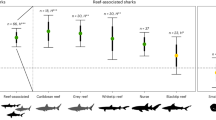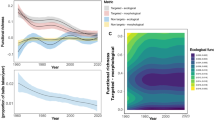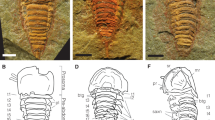Abstract
Lebistes reticulatus has always been considered as a strictly freshwater fish1 (that is, it can tolerate only a narrow range of salt concentration in the water). In an evacuation canal, which opens in the sea, at Hann (north of Dakar), we were astonished to find numerous individuals of this species, even in spots where the concentration of sea-water was rather high. Experiments in the laboratory led us to the following conclusions:
This is a preview of subscription content, access via your institution
Access options
Subscribe to this journal
Receive 51 print issues and online access
$199.00 per year
only $3.90 per issue
Buy this article
- Purchase on Springer Link
- Instant access to full article PDF
Prices may be subject to local taxes which are calculated during checkout
Similar content being viewed by others
References
Pickford, G., and Atz, W., N.Y. Zool. Soc. Pub., 156 (1955).
Author information
Authors and Affiliations
Rights and permissions
About this article
Cite this article
MOHSEN, T., EMERIT, M. Adaptive Euryhalinity in the Cyprinodont Lebistes reticulatus Peters. Nature 190, 932–933 (1961). https://doi.org/10.1038/190932a0
Issue Date:
DOI: https://doi.org/10.1038/190932a0
Comments
By submitting a comment you agree to abide by our Terms and Community Guidelines. If you find something abusive or that does not comply with our terms or guidelines please flag it as inappropriate.



